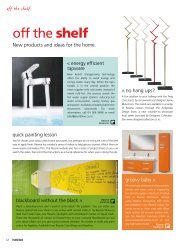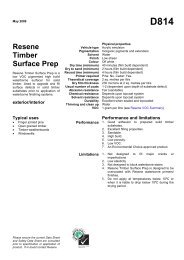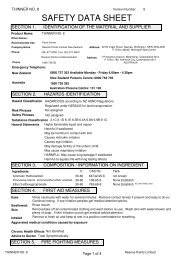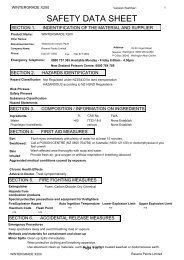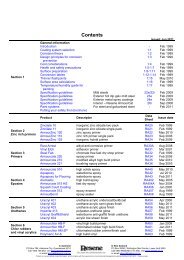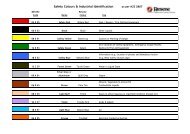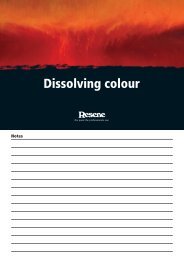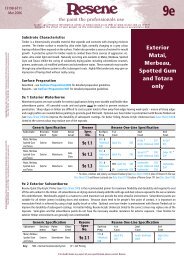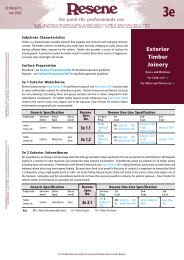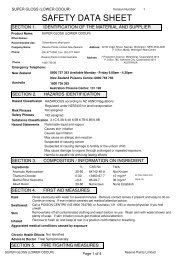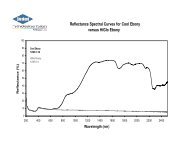Putting your safety first - Resene
Putting your safety first - Resene
Putting your safety first - Resene
- No tags were found...
You also want an ePaper? Increase the reach of your titles
YUMPU automatically turns print PDFs into web optimized ePapers that Google loves.
The <strong>Resene</strong> checklist – part oneBe PaintWise... Tips on how to use up and dispose of leftover paint without pollutingthe environment.Got leftover paint? Get with the<strong>Resene</strong> PaintWise programme!More than six litres of household paint is soldfor each and every person living here everyyear. That’s a lot of paint particularly as muchof it is left sitting in paint containers and endsup in landfills. Disposing of paint correctly isimportant otherwise harmful components maybe discharged into groundwater or streamsaffecting other living animals, fish or plants.There are lots of ways you can reduce thisburden on the environment... here’s someideas to get you started:Reduce:Buy only the paint you needThe best way to save waste is to avoid buying toomuch. Carefully measure up the area you plan topaint and use the coverage recommendations onthe side of paint cans to check how much you needor ask <strong>Resene</strong> ColorShop staff for assistance. If youbuy what you need and find you have paint left atthe end of the job, you have probably applied ittoo thinly - in which case the best idea is to paintan extra coat to give the surface full protection asa thin coat means that the paint finish will notwear as well. Don’t be tempted to buy anunnecessarily large pack size just because it is onspecial - remember the best deal is the one thatgives you just the paint you need.Use:Use up all <strong>your</strong> paintIf you have leftover paint, use it for touch-up jobsand smaller projects or add another coat to <strong>your</strong>paint finish for extra protection. Waterborne paintsare also ideal for creating signs and banners andcan be a much cheaper and more durable optionthan expensive felt pens - this can be a great wayto use up any extra paint you may have.20Store:Store paint so it lasts for yearsBrushes or rollers can transfer contamination fromthe surface you are painting back into the paint.The best way to work with paint is to tip out asmall volume into a separate paint pot and usethis for painting. Pour out only what you need forthe job. This will leave the paint in the main paintcontainer fresh and untouched by <strong>your</strong> brush orroller. Properly stored paint can last for years. Coverthe top of the paint can with plastic wrap, placethe lid on securely and store upside down. Thepaint will create a tight seal around the lid andwill remain fresher for when you next wish to useit. Store away from extreme heat or cold. Keep outof reach of children.Recycle:Recycle the empty paint containerOnce you’ve used up <strong>your</strong> paint, recycle the emptysteel paint can -simply allow the contents to dryout, then bring to a <strong>Resene</strong> PaintWise collectioncentre with the lid off the can so staff can see itis dry and empty. Each paint can you recycle is oneless can that ends up in a landfill. If there are no<strong>Resene</strong> PaintWise collection centres in <strong>your</strong> area,contact <strong>your</strong> local council for recycling options.Most plastic paint containers are recyclable throughkerbside recycling but paint residues must beremoved. This is best accomplished by scrapingthe wet paint out. Check with <strong>your</strong> local councilto ensure that kerbside recycling in <strong>your</strong> area willaccept clean plastic paint containers.Reuse:Reuse packaging materialsClean out paint cans and pails and reuse them aspaint pots or buckets. Use inside drains (not thestormwater drains) or wash onto <strong>your</strong> lawn.



